Vienna is the Capital City of Austria and it means a ‘forest stream’. From a Roman settlement in the early years, the city evolved to a major trading centre in the 11th century and subsequently to a cultural hub of Europe. Today you can see the impressions of its historic past reflected on the architectures all around and interspersed with contemporary work.
There are plenty of wonderful tours you can undertake to get a glimpse of what Vienna offers to the world – scenic & historic excursions, guided walks on food trails, culture & art tours, sightseeing by boat and a lot more.
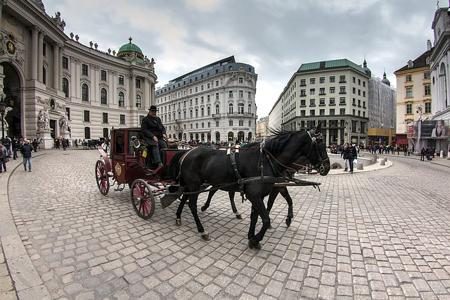
There are three main areas in Vienna that you should explore. The first is Innere Stadt. This is the old town of Vienna and also the city centre. It’s full of grand buildings and monuments that are designed on architecture such as Medieval, Baroque and even contemporary. The place is also known for high-end shopping. A large part of it is a pedestrian zone.
Second is Mariahilfer Strasse – the largest shopping street in Vienna full of boutique stores and global brands.
And third is Ringstrasse – a circular boulevard (or the ring road) which has spectacular historic buildings from the 1800s among other attractions.
Some quick facts about Vienna: The city has a population of around 1.9 million. It has the highest elevation of 542 metres at Hermannskogel. Vienna is spread over 415 square kilometres in the Danube valley where the river Danube flows from northeast to southwest of the city.
Watch the short video
Attractions
Stephansdom (St. Stephen’s Cathedral) at Innere Stadt is a gothic cathedral that has an imposing spire that dominates the Stephansplatz area. Nearby is Mozarthaus Vienna (Mozart House) where Western classical maestro Mozart composed the ‘Marriage of Figaro’.
A few steps away is Karntnerstrasse in Innere Stadt, a place full of boutique stores and cafes.
On the western side of Innere Stadt is Hofburg, a huge palace of the Habsburg empire built in the 13th century. The entry ticket also allows a visit to Silver museum, Sisi museum and Imperial Apartments. Hofburg now serves as the venue for the international congress with a seating capacity of 320,000 guests.
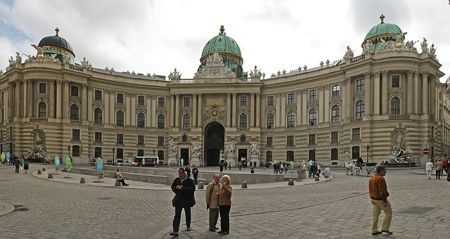
Opposite Hofburg is Spanish Riding School with street-side stables. A few blocks away is the Kunsthistrisches Museum in Ringstrasse where you can view antiques and the creation of the old masters. Towards the west of Ringstrasse is the Museum of Modern Art (known as Mumok). The place also has theatres besides cafes.
St. Charles Church (Karlsklrche) in Karlsplatz is built in Baroque style where concerts like Mozart’s Requiem, Vivaldi’s four seasons are a regular feature during evening hours.
Ahead is Belvedere, which is a huge and magnificent garden. If you have a ViennaPass, then entry to Belvedere is free, otherwise, entry fees apply (15 Euro for upper level, 13 Euro for the lower, combined ticket is 22 Euro). It also houses an art museum, and two palaces: the Orangery (at the east side) and the Palace stables which is open to art exhibitions.
The palace has its main gate at lower Belvedere leading to the central Marble Hall, Golden Room, and Hall of Grotesques. It leads to the garden facade in the Upper Belvedere. The magnificent garden has giant cascaded fountains which you can watch between 10am to 12noon and 2pm to 5pm.
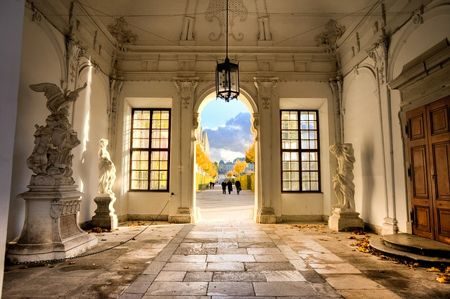
Don’t miss the Schonbrunn Palace. You can take the U4 metro line from the Karlplatz station to reach. The 1,441 room palace is a historical monument of Vienna designed in Baroque style. It has a park area, Gloriette, the Roman ruins and Obelisk Fountain. UNESCO catalogued it as a World Heritage site in 1996. It’s open from 8:00 till 17:30 hours, and entry fee depends on short visit (14 Euro) or a long visit (24 Euro).
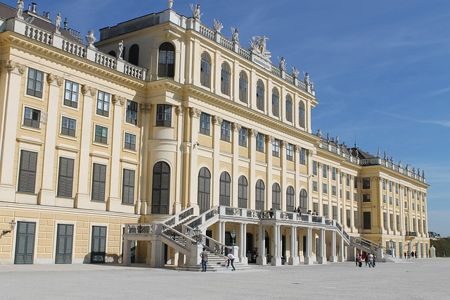
You can take a half-day city bus tour to go around the city. Alternatively, take a boat trip on the Danube (DDSG Blue Danube) to get a view of the city from the river. Another great idea is to take an open horse carriage ride (Fiaker) from Stephansplatz to roam around in Altertinaplatz and Heldenplatz for a while.
Another nice option is to take the hop on and hop off the HOHO bus that starts from Staatsoperpassing and travels through 13 tourist spots. You can also take a leisurely city tour on a Vienna tram. The ‘1929 trundle through Vienna’ – a one-hour tram journey departing from StadtPavillions at Karlsplatz on weekends & holidays in the months of May – October is a lazy yet wonderful way of getting a feel of the city.
Vienna offers 450 Classic Viennese balls per year and they are quite unique in the whole of Europe, and that is one thing that you may like to experience. Other places to visit include the Mozart memorial grave at Habsburg gardens, Madame Tussauds Vienna (Euro 23), riding the giant Ferris Wheel (Euro 10) in Riesenradplatz to view the skyline of Austria, etc.
Food & Drinks
Historically, Vienna’s speciality in food and wine reflects the influences of different invasions from different time periods. Naschmarkt is one of the best places to go if you are looking to eat out… there are 120 stalls and restaurants there and it has developed into a culinary hub. However, there are other popular places as well in Vienna for trying out great food.
You need to try Schnitzel, Tafelspitz, Kaiserschmarrn (to name a few) to know what makes Vienna a city of gourmets. Schnitzel is a dish of pounded boneless meat tossed in oil and served with salad & French fries. Try out the authentic Austrian Wiener Schnitzel at Figlmüller that is pan-fried breaded veal cutlet served with assortments.
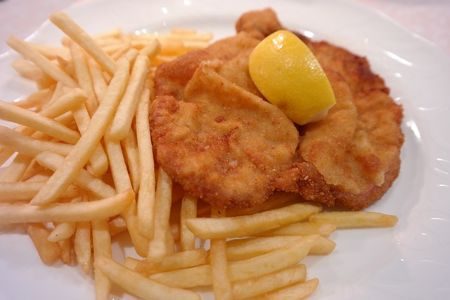
Kaiserschmarrn is a shredded pancake, made of egg, sugar, milk and flour in butter. Also try Tafelspitz in Plachutta Wollzeile located near St. Stephan Cathedral (5-minute walk), a tasty beef in broth, with apples and horseradish chopped.
Wine from Wachau valley ranks amongst the best in Europe… premium white grapes are used for ‘Riesling wines’. You can also try other varieties of wines that are excellent too, like the Chardonnay, Muller-Thurgau, Muscat-Ottonel, Neuberger, to name a few.
Vienna’s local wine taverns are known as ‘Heuriger’ and identified by a green wreath on the door. A great one is Esterhazykeller in Innere Stadt. Another one is Schlumberger Kellerwelten in Dobling… here explore the cave-like cellar area with 300year old bottles, savour champagne, take an audio tour and buy a bottle from their gift shop.
If you are a beer lover, you get 360 distinct beer brands across Vienna pubs. Try hopping into ‘1516 Brewing company’ in Krugerstrasse which offers excellent Austrian craft beer.
There are a number of restaurants & bars in Innere Stadt and between Ringstrasse and Gurtel offering a range of cuisine. You can find pasta-house cum bar, traditional food, food hall-style place, Austro-Italian food, Cafes offering organic vegetarian dishes, Japanese cuisine… the list goes on. Try out Café Central (in Herrengasse)… it offers authentic and mouthwatering Viennese cakes and pastries.
You can find buzzing pubs and bars in Naschmarkt, around Spittelberg, Gurtel, near the Danube canal, and in Innere Stadt. Try visiting Lamee Rooftop Bar (you can walk down from St. Stephen’s Cathedral, a few blocks through Kartner Strasse and Graben). The view of the Vienna skyline at sunset from this rooftop bar is stunning.
Don’t miss out on ‘Zanoni & Zanoni’ (a few minutes from Stephansdom)… the gelato ice creams with Raspberry flavour is heavenly.
There is another side of entertainment that Vienna offers to the music aficionados, and that is the classical and opera music. You can find a rare breed of jazz bars like ‘Porgy and Bess’ (located close to Stadtpark, shows start every day at 7.30pm with performers from all around the world).
Vienna is also dotted with nightclubs… ‘Flex’ (live bands) is very popular and DJ plays on a huge outdoor terrace starting at 5pm.
Shopping
Vienna’s specialities are porcelain & ceramics apart from leather, Austrian dolls, Altwaren (used items), stamps, coins etc. Peek into the bustling Mariahilfer Strasse. This is where all shoppers would eventually land up. KarntnerStrasse and Landstraber Haupstrabe are the two second-largest shopping areas, which you can easily reach by taxi.
You can also try Neubau that has interesting shops selling souvenirs, and Otto Bauer Gasse is a great place for buying small souvenirs & gifts. Neubaugasse (in Line U3 of UBahn) is good for used items that are ideal for collectors.
You will find many well-known departmental stores in Vienna like Gerngoss (in Neubau), Steffl (KarntnerStrasse) etc. For ceramic gift items, try out Woka, J&L Lobmeyr, Osterreichische Werkstatten, porcelain Manufacturer Aurgarten, LodenPlakl, Lederwaren Manufaktur, Thomas Hicker, etc. If you are looking for Austrian confectionary then try out brands like Demel, Manner, Altmann & Kuhne… cookies are superb. If you are looking to buy Austrian wine, get them from Wien & Co, Bernthaler + Bernthaler, or Unger under Klein.
For fresh fruits and vegetables, Naschmarkt is the place to go… it has large number of stalls selling all kinds of fruits & vegetables. On Saturdays, a very popular Flee Markets sets up here.
How to reach
Numerous airlines from nearly 70 countries operate to Schwechat Airport of Vienna. You can also reach Vienna by train… national and international trains stop at Central Railway station (long-distance trains are Railjets and Intercity Express). Westbahnhof station in Vienna is where western EU trains arrive. From Munich, it takes about five hours to reach Vienna by train, Zurich (six hours), Frankfurt (seven and half hours), Berlin (12 hours), and Budapest (two and half hours).
Local transport
Once you arrive by flight, you can visit the Tourist Information Office (open 7am – 10pm) at the airport. You can also use the free airport wi-fi to download and log into the ‘Vienna airport app’ and get to know about the airport facilities. The airport is 19kms away from the city centre and located in the southeastern part of Vienna.
Other than taxis, you can avail City Airport Train (CAT) to reach the city centre in 16 minutes. There are car rentals like Avis, Budget, Europcar, Hertz etc at the Vienna airport arrival area. Another option is to use BusLink to Westbahnhof (35 minutes), Schwendenplatz (20 minutes).
If you like to rent a motorbike, then note that there are 20 pay zones, and you need to purchase vouchers for parking. Public transport in Vienna is extensive… there are (U Bahn) underground and (S Bahn) suburban trains. With a frequency of 10 minutes, they operate from (5am till 12.30am) going across the city and connecting the suburbs.
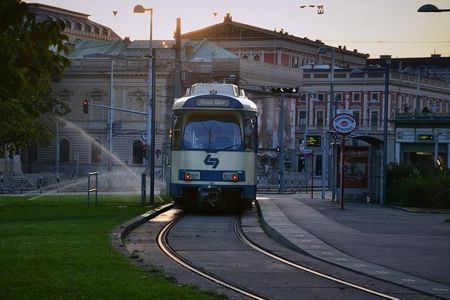
You can find information offices at Karlsplatz, Stephansplatz, Westbahnhof to know more about public transports at Vienna (open from 6.30am to 6.30pm Monday to Friday and 8.30am to 4pm Saturday and Sunday).
There are various types of tickets/passes for public transports… DieWienKarte (Vienna card), Monatskarte (monthly, 1st to 30th of the month), 24 Stunden Wien Karte (unlimited travel for 24hours), Wochenkarte (Monday to 9am Monday), 8 TageKarte (valid for 8 days) etc. You can buy the tickets at Metro and Railway stations.
Read: Local transports and how to get around Vienna.
Best time to visit
April to May is spring and is a great time to visit Vienna… weather is mild and comfortable, and not many tourists have poured in yet. However, during summer (i.e. June to August) there is a lot of tourist rush. September to October is the fall period when the season gradually transitions towards winter. This is another good time to visit as the rush has by now thinned out. The coldest months are December to February when day temperatures can even touch zero degrees Celsius.
Read: Important weather conditions in Vienna & other major cities of Austria.
 A travel addict. Still celebrating the day when he quit his high-profile corporate job to pursue his passion for travel writing.
A travel addict. Still celebrating the day when he quit his high-profile corporate job to pursue his passion for travel writing.